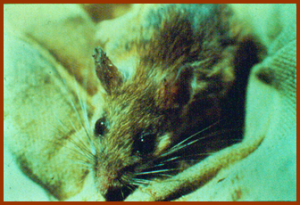
SHARE THIS ARTICLE:
Mouse Specimens Help Assess Lyme Spread
Meghan Leber, et al., published a study in Ticks and Tick-Borne Diseases that examined the theory that B. burgdorferi sensu stricto was already present in populations of Peromyscus leucopus (white-footed mouse) in western Virginia and North Carolina before the relatively recent emergence of Lyme disease in this region of the U.S.

P. leucopus museum specimens that had been collected from 1900 until 2000 were analyzed for B. burgdorferi s.s. DNA. First, viability was confirmed for DNA extracted from ear biopsies sourced from P. leucopus skins that had been acquired between 1945 and 2000 in 19 Virginia counties and 17 North Carolina counties. Then the researchers used qPCR of two species-specific loci to assess the incidence of B. burgdorferi s.s. DNA. Of the grouping, ten mice, all gathered from the Eastern Shore of Virginia in 1989, tested positive for B. burgdorferi while the remaining 344 specimens were found to be negative.
Results of the study suggest that B. burgdorferi s.s. was not widespread in western Virginia or North Carolina prior to the more recent emergence of Lyme disease cases that have been occurring over the past two decades. The researchers suggest that the spread of Lyme disease in these regions has presumably been driven by an increase of B. burgdorferi s.s. in southbound-moving ticks and reservoir hosts in mountainous counties of these states.
Read the study in Ticks and Tick-borne Diseases.
For More Information:
Read more about white-footed mice as reservoir hosts of Lyme disease.





